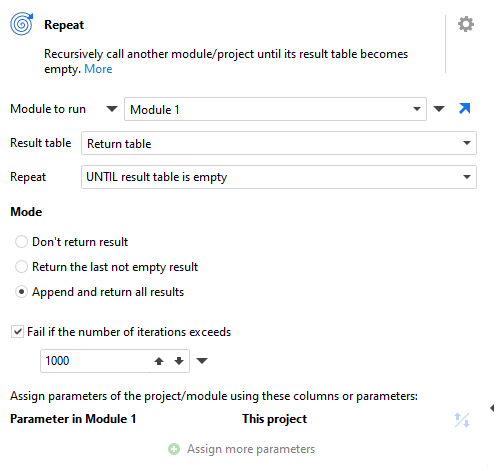Hello,
I'm trying to simply do a repeat on a single action. (Before doing something more complicated, I would like to test)
I've made a specific example for that, because I can't make my process works.
With a simple modify column, on a simple column, removing text on conditions.
If it contains this text and this text, or this text and this text, so remove this one.
It's like 'text1,text2,text3,text4' -> If it contains "text4", remove "text4".
And there is a condition inside to remove all the comma.
I need to to this multiple times on the same column, to finally have only one word, without comma.
That is why I need to use a repeat.
But, I can't make it works multiple times ?
What I understand with the repeat action is : I need to repeat my process until something.
So in the action, there is "Until result table is empty".
Perfect, if I put a derived table on condition, when the condition is not met, it will be empty.
I use the input action in the repeated module to get my rows :
This is my repeated module, where you can see my condition inside the derive table (if any row has a comma) :
In my case, I need to do the modify column 4 times to have a result without any comma inside.
This process works only 1 time.
If I put multiple times my modify column, it works well (so without the repeat).
Of course, I would like to retrieve the last processed values.
Here I retrieve the values, but after 1 "Repeat" done.
Am I using wrong the conditions for the derive table, or the repeat condition and mode ?
Thank you for you help.

